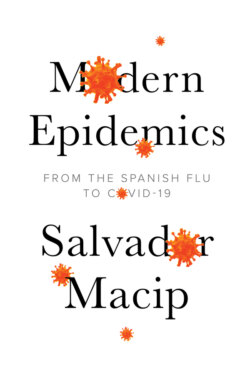Читать книгу Modern Epidemics - Salvador Macip - Страница 9
Let’s do our homework
ОглавлениеMeanwhile, what can we do? Prepare ourselves for the future. It’s easy to forget the latent problem of pandemics when we’ve just overcome one and, in statistical terms, it’s not very likely that the next one will appear any time soon. But governments have the obligation to plan rapid response measures and, even more important, to instruct the population. Unless people – all the people – participate, we won’t be able to confront infections with any guarantee of success. We’ve already seen this twice in the twenty-first century: when there’s a crisis at the global level, it’s necessary to count on everyone to root out the problem. The conclusions we can draw in 2020 are the same as those reached in 2009. Most importantly: when a new virus appears, rapid, coordinated action is necessary until we understand the extent of the symptoms it’s causing, even if they seem mild at first. And we can only achieve this if we all understand how an infectious disease works and what the real power of microbes is.
Though it may seem excessive, isolating infected populations, encouraging hygiene and avoiding large gatherings of people are highly effective strategies in these situations, especially when it comes to making sure that the disease doesn’t cause its own particular kind of collapse of a country’s health system, which would end up with many collateral victims. This is crucial in the early phases of an epidemic. But it’s also necessary to improve public management of the crisis, which is invariably one of the weak points. And there will always be someone who believes the whole thing is a plot or an exaggeration, but we must manage to ensure that this position remains marginal, and that people listen to those who know what they are talking about. Hence, there needs to be a sound, well-coordinated communication strategy and, if possible, one with a single, reliable source of information (maybe the WHO, or maybe a new body) backed by all the authorities and the media and making the details widely available. And all of us also need to make an effort to learn a bit more about microbes.
SARS and MERS have been warnings of the danger that a microbe from this family could represent in the right conditions, and scientists spoke out loud and clear to announce it. Many people thought they were exaggerating because neither of the two epidemics turned out to be as serious as originally predicted. Now, with millions affected by COVID-19, from Asia to America and everywhere in-between, the fear of being vulnerable to the microbes around us has become generalized. Which position is more correct? Shrugging it off to the point of ignoring the experts’ warnings, or panicking about going outside and breathing air that’s full of invisible killers? The best idea, of course, is to find a middle course.
However, in order to make these kinds of decisions, we need clear information about the present risks of suffering from a serious infection and what we can do to prevent it. It isn’t always easy to obtain this because we are constantly finding clashing opinions in the media, ranging from those announcing an apocalypse to others who believe there is nothing to worry about. Who is right? We must respect viruses and bacteria and understand that we can’t always defeat them, and now, well into the twenty-first century, we also need to know the extent to which it’s possible that a pandemic can cause millions of deaths, as has happened several times throughout history.
